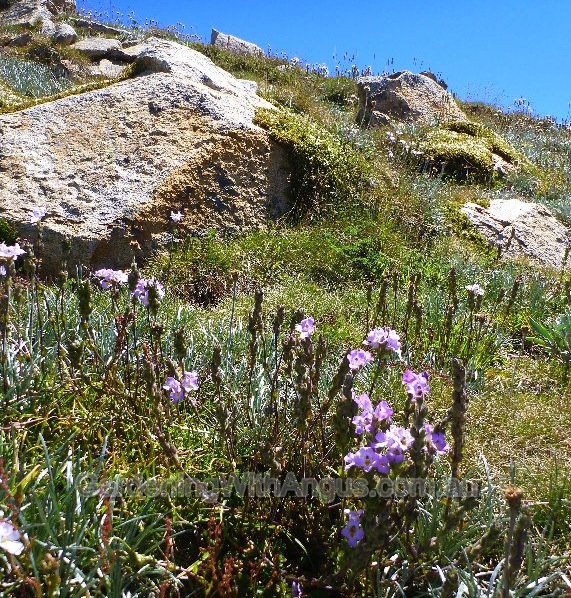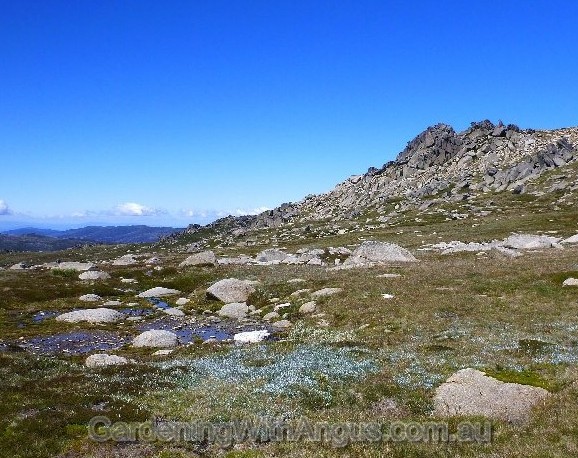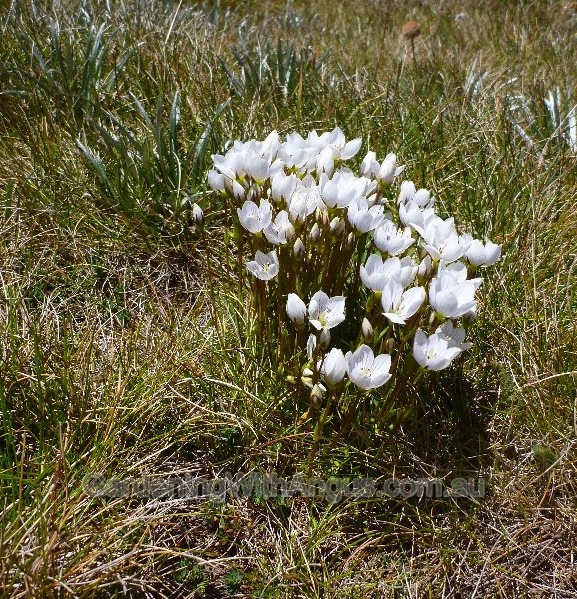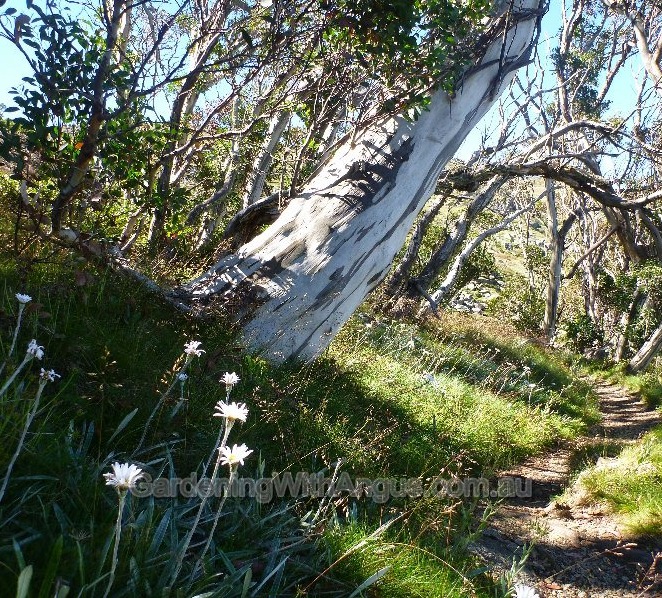The wildflowers of the Snowy Mountains are truly one of Australia’s great botanical treasures. During mid-summer the high plains around Mt. Kosciuszko are lit up with a succession of wildflowers various daisies such as everlastings, billy buttons (Craspedia sp), and little Brachyscome daisies.

Mountain eyebright, Euphrasia collina
There are the mountain eyebrights, or Euphrasia, the alpine mint bush (Prostanthera cuneata) – there are so many things to attract your attention. It’s also very accessible, considering it is a truly treeless alpine area. There are not many places in the world where you can easily get up to that sort of elevation and observe the wonderful wildflowers. It’s well worth a trip into Mt. Kosciuszko National Park. Probably mid-January is the peak time.

Granite outcrops & glacial erosion around Mt Kosciuszko
The geology of the region is equally as fascinating as the botany. Around 450 million years ago, the Snowy Mountains were underneath the ocean. All sorts of sediments were deposited and then uplifted, and that uplifting caused metamorphosis of the sedimentary rocks, and there’s also a lot of granite, which is an igneous rock from volcanic activity.

Glacier formed lake near Mt Kosciuszko
What we see through the Snowy Mountains are all sorts of different rock types, with have weathered to produce a patchwork of different soil types. During the ice ages, the Snowy Mountains were covered in glaciers, and some of the landforms such as the lakes in the high plains area, such as Lake Cootapatamba, are the result of glacial activity, where the rocks have been gouged out.
As you learn a little but about the high country, you start to appreciate that it is a mosaic of different soil types and microclimates. The big granite boulders provide opportunities for microclimates, as they absorb the sun during the day and radiate that heat back out at night. Many of the shrubs up in this high country and plants that cling on to the rocks and literally grow as fascinating granite bonsai plants. It’s just a wondrous experience to spend a day up in the high plains area, observing all the amazing ways that nature has adapted to the harsh climate.

Bonsai-looking plants cling to the granite boulders
The botany of the high country is also very interesting. Given the great age of the rocks there, it’s no surprise to learn that the rocks were once joined to the various other continents and they spread apart during the long period that Gondwana, the great supercontinent broke up. Consequently, the flora of the Snowy Mountains has all sorts of interesting affinities with those of other continents. This is something of a mystery, but the continental drift theory has helped to explain why we find families such as Rosaceae, the rose family, or the Ranunculus family.

Alpine everlasting, Leucochrysum albicans

Grevillea victoriae
There are a number of beautiful ranunculus species up in the Snowy Mountains which perhaps have more in common with the flora of the northern hemisphere. The family Scrophulariaceae can also be found in the mountain eyebrights. So there’s a host of unusual plant families for Australia. Of course, the Grevillea family is also represented, as well as the myrtle family, or Myrtaceae, with its various snow gums and kunzeas.

Snowy white mountain gentian, Gentianella diemensis
If you’re thinking of a trip to the high country to enjoy the wildflowers, my tip would be to plan it for January, when the biggest variety of wildflowers is at its peak, like snow daisies, billy buttons and everlastings. Around that time, in late summer and autumn, you will find smatterings of various species, but the real crescendo is in January.

Alpine flowers – Stylidium sp

Cheerful golden billy buttons, Craspedia sp
The area is very accessible from either Thredbo or Perisher, from where you can mount an expedition. A day trip is a great way to see lots of the high country and there are a number of walks through the Mt. Kosciuszko National Park. It’s a trip well worth making!
[For more information about Australia’s alpine vegetation, see this excellent publication from the Australian Alps National Parks – Ed]
A tangle of snowgums on a protected slope
